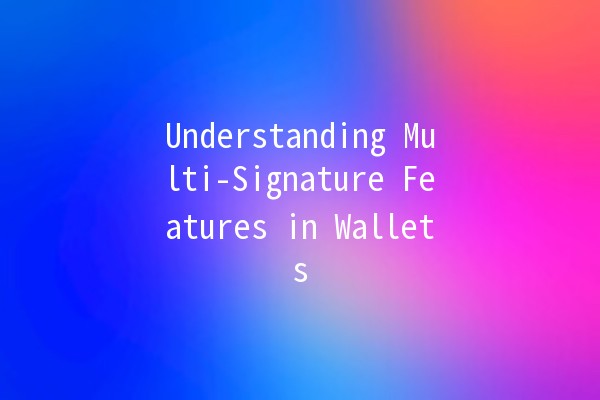




In the world of digital finance, securing your assets has never been more crucial. Multisignature (multisig) wallets represent a significant advancement in enhancing security. These sophisticated tools enable users to require multiple approvals for transactions, drastically reducing the risk of fraud or unauthorized access. In this comprehensive exploration, we'll delve into the mechanics of multisignature wallets, their benefits, and practical insights, including five productivity tips to make the most out of these wallets.
A multisignature wallet is a type of cryptocurrency wallet that requires more than one private key to authorize a transaction. This configuration can enhance security and protect users from various risks, such as loss of funds or theft.

Unlike traditional wallets where one private key controls access, multisig requires multiple keys distributed among several individuals. For example, a 2of3 multisig wallet means that out of three possible signatures, at least two must authorize a transaction for it to proceed. This framework can serve different organizational needs, from individuals wanting enhanced security to businesses requiring shared control over funds.
To maximize the benefits of using multisignature wallets, consider implementing the following productivityenhancing strategies:
Explanation: Create a welldefined process for how transactions will be authorized within the multisig wallet structure. This helps prevent delays and misunderstandings.
Application Example: If you’re managing a business account, designate a primary signer and alternate signers for backup, ensuring that there are clear roles and expectations regarding who signs what and when.
Explanation: Enable notifications for any transaction requests. This ensures all parties can stay informed and respond promptly.
Application Example: Configure your wallet to send notifications via email or an app whenever a transaction is initiated. This helps the team respond quickly and prevents unnecessary delays.
Explanation: Consistently review who has access to the multisig wallet and the permissions granted to them. This ensures that only necessary individuals retain access.
Application Example: Set a quarterly reminder to audit member access and permissions, adjusting as team members join or leave the organization.
Explanation: Integrate MFA with your wallet for an additional security layer. This makes unauthorized access even more challenging.
Application Example: Require biometric verification or SMS codes in addition to the key signatures when accessing the wallet to add another layer of security.
Explanation: Have a clear plan in place for situations involving lost keys or access issues. Knowing who to contact or what steps to take can save valuable time.
Application Example: Create a shared document outlining steps to retrieve lost keys, including emergency contacts and recovery phrases, and ensure all signatories are aware of its existence.
When selecting a multisignature wallet, it's crucial to consider various factors, including ease of use, security features, and compatibility with different cryptocurrencies.
Research Different Options: There are numerous multisig wallets available, each offering distinct features. Take the time to compare them.
User Reviews and Ratings: Reading user experiences can provide insight into how effective a wallet is in practice regarding security, reliability, and customer support.
Community Support: A wallet with a robust user community can offer better assistance and troubleshooting when necessary.
Multisignature wallets generally support a range of cryptocurrencies, including Bitcoin, Ethereum, and others. However, it's important to check the specific wallet you select to ensure compatibility with your desired cryptocurrencies.
In singlesignature wallets, one person controls a single key, making it easier for unauthorized individuals to gain access if that key is compromised. Multisignature wallets distribute control among multiple keys and users, significantly enhancing security.
While no system is entirely immune to hacking, multisignature wallets provide a layer of protection making unauthorized access much more difficult. A hacker would need to compromise multiple keys to gain access, which is significantly more challenging than just one.
If you lose one of your keys in a multisignature wallet setup, your funds remain secure as long as the required number of remaining keys is still accessible. It's essential to have backup procedures for lost keys, including recovery phrases or alternative signers.
In theory, yes, but it depends on the wallet setup. If you own all necessary signatures, you can control your wallet entirely. However, the essence of multisig is collaboration and security enhancement, so using it with others is recommended.
Most wallet providers have straightforward processes for creating multisignature wallets. Generally, you need to decide on the configuration (e.g., 2of3) and then follow the provider's instructions to create and register the required keys.
Multisignature wallets present innovative solutions for enhancing security and collaboration in the management of digital assets. By understanding their mechanics, implementing productivityenhancing practices, and adopting a clear operational structure, users can maximize their benefits while minimizing risks. Whether you are an individual or an organization, leveraging multisig technology can provide peace of mind in an increasingly complex digital landscape.
By adopting these practices, you’ll not only secure your assets effectively but also enhance your operational efficiency, making your experiences with multisignature wallets more productive and seamless.